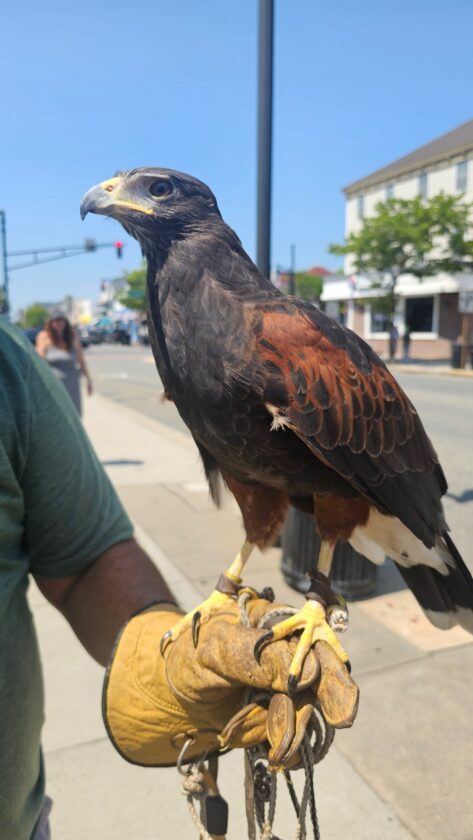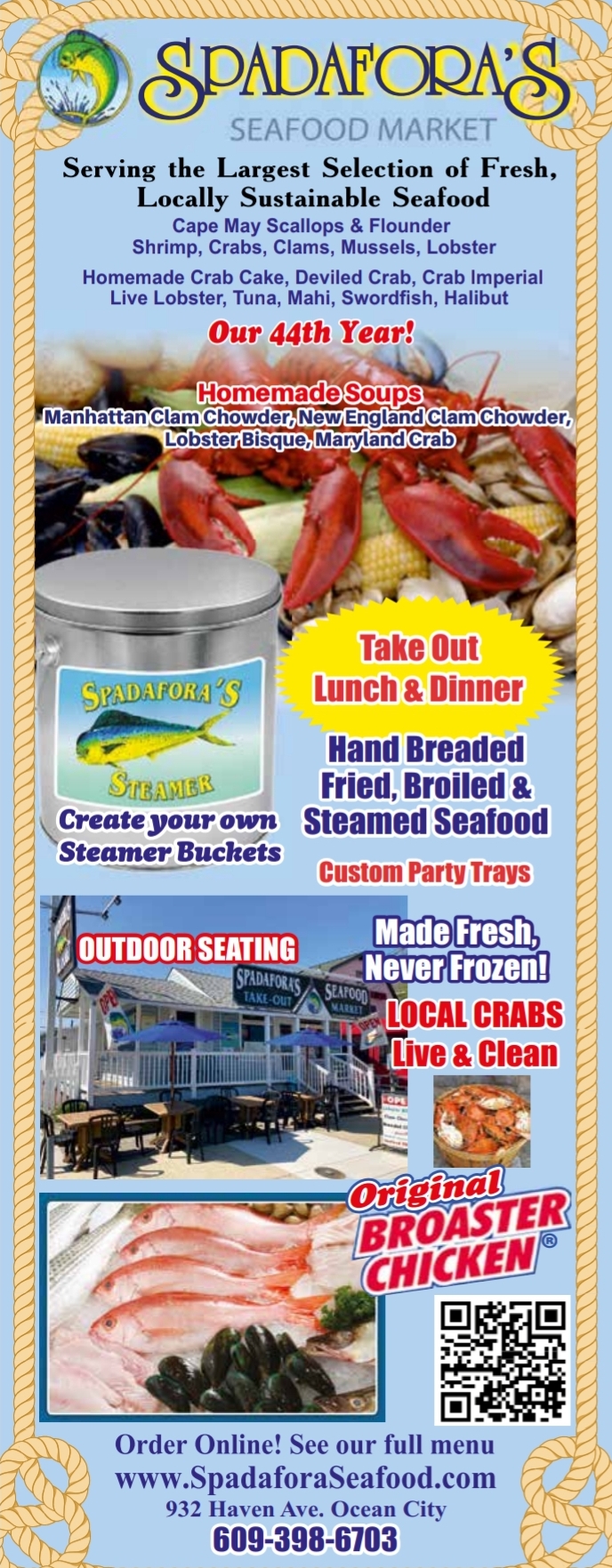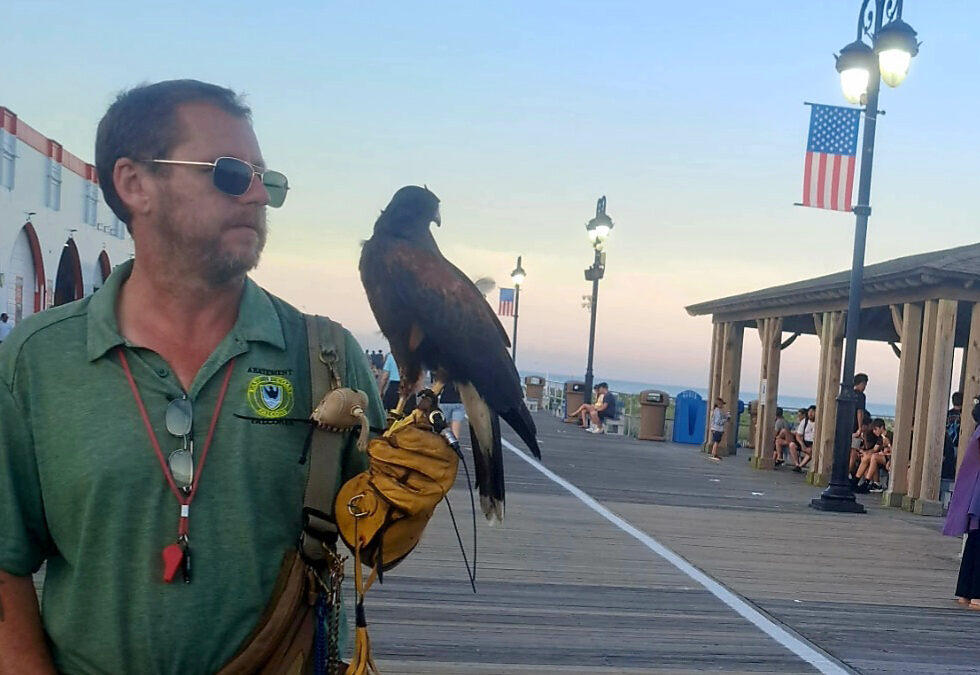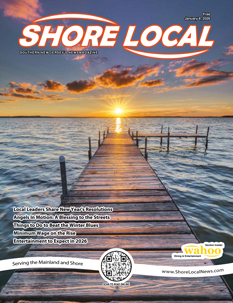This Fourth of July weekend was a busy one here at the Shore. The Ocean City Boardwalk was packed with vacationers and locals alike. Soaring above them all was a hawk named Polo, working hard to scare aggressive seagulls away from Boardwalk patrons so everyone could enjoy the holiday.
Why the seagull abatement program became necessary
Picture a serene beach scene. Imagine the crashing of waves, roar of the ocean, and squawking of gulls.
Sounds nice, right? If life played out exactly like that idealized image, it would be nice to have seagulls peacefully flying over local beaches. And it is attainable; if they are not fed, seagulls do not become aggressive.
But locals and many summer residents know that dream hasn’t always been a reality. Many people do, unfortunately, feed the seagulls or leave food out in the open for them along the Boardwalk. This is dangerous to both the gulls and boardwalkgoers. The gulls become dependent on humans for food, and stray further from their natural diet and habitat.
As for what happens to the people who feed the gulls, swarms of seagulls dive-bomb them and increasingly begin descending upon anyone they see on the Boardwalk, in hopes of handouts. While no attacks have been fatal, one wouldn’t be too far off in comparing the situation to a scene out of Alfred Hitchcock’s “The Birds.”
In 2019, Ocean City began hiring professional falconers to discourage seagulls from behaving aggressively. The seagull abatement program uses trained birds of prey to safely and humanely deter aggressive gulls from harassing beachgoers and stealing boardwalk snacks. The program was launched in response to growing complaints about gulls swooping down on unsuspecting visitors and snatching food right out of their hands.

How falconry works to deter seagulls
Ocean City employs East Coast Falcons to patrol the Boardwalk and command their feathered friends to fly toward swarms of seagulls, scaring them away. The birds of prey then return to perch on their falconers’ gloved hands. This practice harms neither the falcons nor the gulls.
By the way, the falconers’ birds aren’t just falcons. “We have 12 falcons, three hawks and an owl. Polo’s one of our Harris hawks,” said Ben Frank, a professional falconer who worked on the Boardwalk over the holiday weekend. Frank handles Polo, who does have a brother named Marco.
One common misconception is that the falcons hunt the seagulls on the Boardwalk. They actually just chase seagulls away when they begin to congregate near boardwalkgoers. The mere presence of these birds of prey deters seagulls.
Frank demonstrated how he commands Polo to fly atop a light post along a crowded section of the Boardwalk. Polo obeyed, flying off majestically to perch overhead. By perching in plain sight, the hawk wards off gulls.
The falconers’ birds are also compensated, in a way, for their work. One common reward for obeying their falconer’s commands is quail meat. Falconers’ birds willingly choose to return to the falconer each time they fly away, because they associate their falconer with food. Indeed, after a few moments, Polo returned to Frank’s outstretched arm.
“The average bird takes a few weeks to a month to train,” Frank explained. “Sometimes they can take a little bit longer. It depends on the personality of the bird.”
Frank has been a professional falconer since 2006, though he began doing falconry as a hobby in 2003.
According to the New Jersey Falconry Club, falconry is an ancient art that has been practiced for thousands of years. Historically, it was the sport of the nobility. Today, this practice is open to everyone, as a hobby or even an occupation.
If you are interested in falconry, Frank advised that the first step is to visit the New Jersey Falconry Club’s website at https://www.newjerseyfalconryclub.com/. There, you can find detailed information and resources on getting started.













